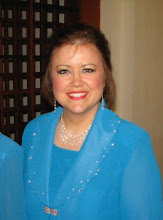Friday, July 9, 2010
If Only I Had Known
To End With a Preposition or Not
Thursday, July 8, 2010
Comma On Over
Wednesday, July 7, 2010
Apostrophes and the Plural Noun
Now, Where to Put You?
Sunday, May 30, 2010
Grammar Girl Knows Her Stuff
http://grammar.quickanddirtytips.com/
I have been listening to her podcasts for years, and she has a great way of explaining concepts that makes them easy to understand. Since she and I are both passionate about helping people speak and write correctly, I encourage you to use her as a reference. She is my hero!
May 30, 2010
Don't Be Afraid of "Me!"
The personal pronouns “I,” “me,” and “myself” are not interchangeable. Each one has a particular purpose and should never be used in the place of another.
When I am the subject of the sentence, the one doing the action, I will refer to myself as “I,” whether or not there are any other persons doing the action with me.
I am going to the beach.
Mary-Sue and I are going to the beach.
Bob, Mary-Sue, and I are going to the beach.
I always refer to myself last in a list of people because it is more polite.
When I am the object of the sentence, the one to whom the action is being done, I will refer to myself as “me,” whether or not I am alone.
My mom is taking me to the beach.
My mom is taking Mary-Sue and me to the beach.
Would you take Mary-Sue and me to the beach?
This is just between you and me.
There is something you should know about Bob and me.
The important thing to remember is to use the same pronoun to refer to yourself as you would if there were no other people being mentioned. You would never say, “Would you take I to the beach?” so don’t say “Would you take Mary-Sue and I to the beach?”!!!
When I want to reflect the action back on myself or place extra emphasis on the fact that I have done something, I will use “myself.”
I had to cut my hair myself because no one was around to help.
I, myself, am responsible for my actions.
Let me tell you a story about myself.
I am learning more about myself everyday.
“Myself” cannot be used in place of “me,” although this is a common mistake. Don’t say, “Give that to Bob or myself.” It should be, “Give that to Bob or me.” You can’t do anything to “myself;” you can only do things to “yourself!”
Phrases that annoy Professor Tee
Anakin, don’t do anything without first consulting either myself or the council.
Please turn in your report to Charlene or myself.
Would you take Nancy and I to the airport?
I want to tell you a story about Dave and I.
All these atrocities are sentences I have heard in real life (or in movies) from apparently well-educated adults!
People are afraid of using “me” because of hick-sounding speech like, “Me and Mary-Sue are going to the beach.” However, that does not mean that “me” is always wrong! When in doubt, just remove the other person, and that should make it clear which pronoun to use.
Please consult me.
Please consult the council or me. (List yourself last, Obi Wan!)
Turn in your report to me.
Turn in your report to Charlene or me.
Take me to the airport.
Take Nancy and me to the airport.
I want to tell you a story about myself.
I want to tell you a story about Dave and myself.
(Or she could have said, “Something happened to Dave and me.”)
May 30, 2010
